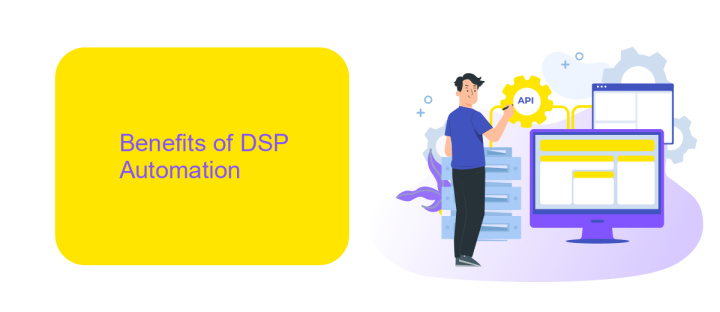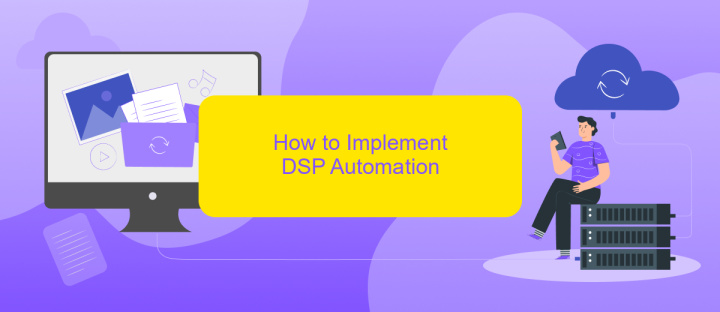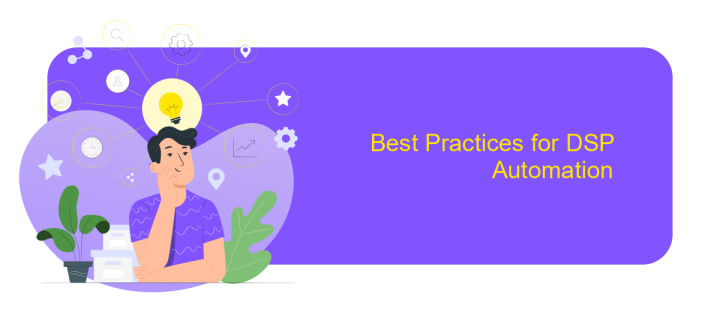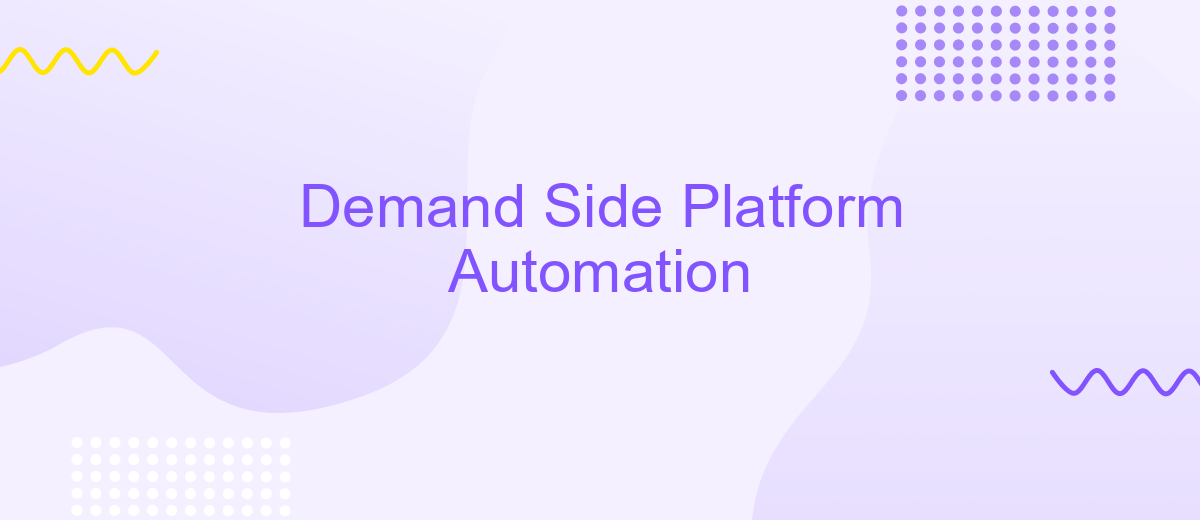Demand Side Platform Automation
In today's rapidly evolving digital advertising landscape, Demand Side Platform (DSP) automation has become a game-changer for marketers seeking efficiency and precision. By leveraging advanced algorithms and real-time data, DSP automation streamlines the ad buying process, enabling advertisers to target audiences more effectively and optimize campaign performance. This article explores the transformative impact of DSP automation on the advertising industry and its potential to drive future innovations.
Introduction
In today's rapidly evolving digital advertising landscape, Demand Side Platform (DSP) automation plays a pivotal role in optimizing ad campaigns and maximizing return on investment. As marketers strive to efficiently manage and target their advertising efforts, DSP automation emerges as a critical tool, offering enhanced precision and scalability. By leveraging advanced algorithms and real-time data analysis, advertisers can streamline processes, reduce manual intervention, and achieve superior results.
- Improved targeting: DSP automation enables precise audience segmentation, ensuring ads reach the right users at the right time.
- Cost efficiency: Automated bidding strategies help in optimizing ad spend, reducing unnecessary costs.
- Real-time analytics: Access to real-time data allows for immediate campaign adjustments and performance tracking.
As the digital ecosystem continues to expand, the adoption of DSP automation is becoming increasingly essential for businesses aiming to stay competitive. By embracing these technologies, advertisers can not only enhance their campaign effectiveness but also gain valuable insights into consumer behavior. This shift towards automation signifies a transformative change in the way digital advertising is conducted, setting the stage for more intelligent and data-driven marketing strategies.
Benefits of DSP Automation

Automating Demand Side Platforms (DSPs) significantly enhances the efficiency and effectiveness of digital advertising campaigns. By leveraging automation, advertisers can streamline the process of buying and managing ad inventories, reducing manual errors and saving valuable time. This allows marketers to focus on strategic decision-making rather than getting bogged down in operational tasks. Additionally, automation provides real-time data analysis and insights, enabling advertisers to optimize their campaigns dynamically and achieve better targeting accuracy, ultimately leading to improved return on investment (ROI).
Moreover, DSP automation facilitates seamless integration with various third-party tools and services, such as ApiX-Drive, which simplifies the setup and management of integrations. ApiX-Drive offers a user-friendly platform that connects DSPs with other marketing and data analytics tools, ensuring smooth data flow and enhanced campaign performance. This integration capability not only enhances operational efficiency but also allows for more comprehensive data-driven strategies. By automating these processes, businesses can stay agile in a rapidly changing digital landscape, maintaining a competitive edge and driving growth.
How to Implement DSP Automation

Implementing DSP automation can significantly enhance the efficiency and effectiveness of your digital advertising campaigns. To successfully implement DSP automation, it is crucial to follow a structured approach that ensures seamless integration and optimal performance.
- Define Objectives: Clearly outline the goals you aim to achieve with DSP automation, such as improved targeting, cost efficiency, or enhanced reporting.
- Select the Right Platform: Research and choose a DSP that aligns with your business needs and offers robust automation features.
- Integrate Data Sources: Ensure that all relevant data sources are connected to the DSP to enable comprehensive audience targeting and performance tracking.
- Set Up Automated Campaigns: Configure automated bidding strategies and ad placements to optimize performance while minimizing manual intervention.
- Monitor and Adjust: Continuously monitor campaign performance and make necessary adjustments to improve outcomes and achieve your objectives.
By following these steps, businesses can leverage DSP automation to streamline their digital advertising efforts, reduce operational costs, and achieve better results. Continuous monitoring and optimization are key to maximizing the benefits of DSP automation, ensuring that campaigns remain effective and aligned with business goals.
Best Practices for DSP Automation

Implementing automation in Demand Side Platforms (DSP) can significantly enhance efficiency and performance. To achieve optimal results, it's crucial to follow certain best practices. Firstly, ensure that your data integration is seamless. This involves connecting various data sources to provide a comprehensive view of your audience and campaign performance.
Secondly, prioritize the use of machine learning algorithms. These algorithms can help in predicting trends and optimizing bids in real-time, leading to better allocation of your advertising budget. Additionally, transparency in reporting is vital to understand the impact of automation on your campaigns.
- Regularly update and maintain your automation tools to ensure they are aligned with the latest industry standards.
- Continuously monitor the performance metrics to identify areas for improvement.
- Leverage A/B testing to refine your strategies and enhance campaign outcomes.
Finally, foster a culture of continuous learning and adaptation within your team. By staying informed about the latest trends and technologies in DSP automation, your team can more effectively implement innovative solutions that drive success. Embrace feedback loops to refine processes and ensure your automation strategies remain effective and relevant.


Conclusion
In conclusion, the automation of Demand Side Platforms (DSPs) represents a significant advancement in digital advertising, enabling advertisers to optimize their campaigns with greater precision and efficiency. By leveraging advanced algorithms and real-time data analysis, DSP automation facilitates smarter bidding strategies, more accurate audience targeting, and improved ad performance. This technological evolution not only reduces manual intervention but also enhances the scalability of advertising efforts, allowing businesses to reach their desired audiences more effectively.
Moreover, the integration of DSPs with various services and platforms can be streamlined through tools like ApiX-Drive, which simplify the process of connecting disparate systems. By automating these integrations, advertisers can ensure seamless data flow and synchronization, further enhancing the efficiency of their advertising operations. As the digital landscape continues to evolve, embracing DSP automation and utilizing integration services will be crucial for advertisers seeking to maintain a competitive edge and achieve optimal campaign outcomes in an increasingly complex market environment.
FAQ
What is a Demand Side Platform (DSP) in digital advertising?
How does automation improve the efficiency of DSPs?
What are the benefits of integrating DSPs with other marketing tools?
What challenges might one face when automating DSP processes?
How can businesses start implementing automation in their DSP strategies?
Routine tasks take a lot of time from employees? Do they burn out, do not have enough working day for the main duties and important things? Do you understand that the only way out of this situation in modern realities is automation? Try Apix-Drive for free and make sure that the online connector in 5 minutes of setting up integration will remove a significant part of the routine from your life and free up time for you and your employees.

